Search Images
Browse Content (p. 1111)
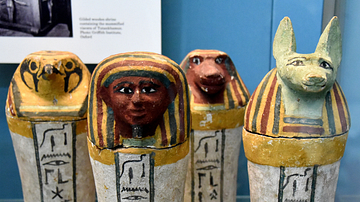
Image
Painted Wooden Canopic Jars
Each of the jars contains a shallow cavity too small to accommodate a package of wrapped viscera. The inscriptions associate Duamutef and Qebhsennuef with a falcon and a jackal respectively. 25th Dynasty, c. 700 BCE. From Egypt, precise provenance...
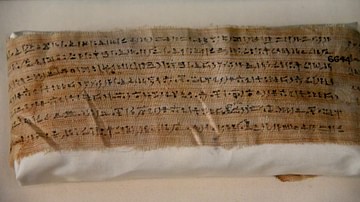
Image
Mummy Linen Inscribed with Portion of the Book of the Dead
Mummy wrapping of a man named Djedher, son of Sekhmetnefret, inscribed in hieratic with funerary texts from the Egyptian Book of the Dead. From Saqqara, Egypt, Late Period of ancient Egypt, 4th century BCE or later. The British Museum, London...
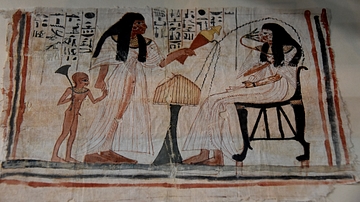
Image
Painted Funerary Cloth of Asetnefret
The dead woman, Asetnefret, seated at the right, sniffs a lotus flower while receiving a libation from her daughter, who holds the hands of her son Penpara. Clothes of this type were placed over the breast of the mummy or coffin. New Kingdom...
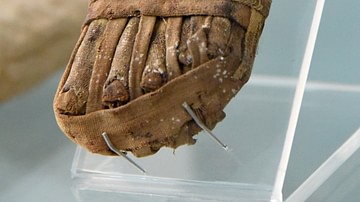
Image
Mummified Left Foot of a Child
Elaborately mummified left foot of a child. The wrappings imitate protruding toes from a sandal. From Qurna, Roman Egypt, after 30 BCE.
The British Museum, London.
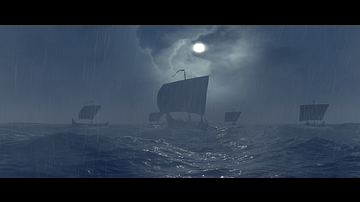
Image
Viking Fleet
An artist's impression of a Viking fleet at sea. (From the PC game Total War: Thrones of Britannia by The Creative Assembly)
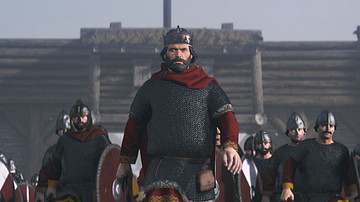
Image
Artist's Impression of Alfred the Great
An artist's impression of Alfred the Great, King of Wessex, r. 871 - 899 CE. (From the PC game Total War: Thrones of Britannia by The Creative Assembly)
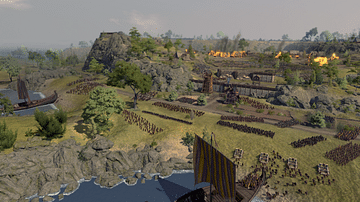
Image
Viking Raids in Britain
An artist's impression of what the Viking raids in Britain may have looked like from the late-8th to 11th century CE. (From the PC game Total War: Thrones of Britannia by The Creative Assembly)
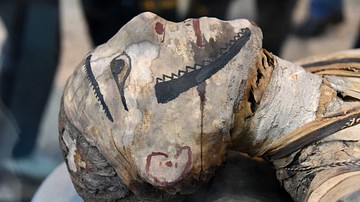
Image
Head of a Mummy from Ptolemaic-Roman Egypt
This is the upper part of the mummy of an unknown young man; probably, his age was below 21 years. The rest of the mummy is intact but is not shown here. The mummy was discovered in the 1820s. The elaborate preparation of this mummy is highly...
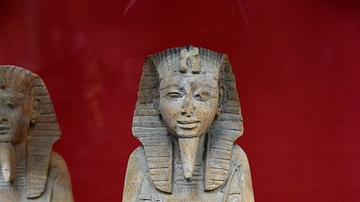
Image
Shabti of Ramesses VI
This is a wooden shabti (ushabti) of the Egyptian pharaoh Ramesses VI. New Kingdom, 20th Dynasty, reign of Ramesses VI, 1143-1136 BCE. From the tomb of Ramesses VI in the Valley of the Kings at Thebes, modern-day Egypt. (The British Museum...
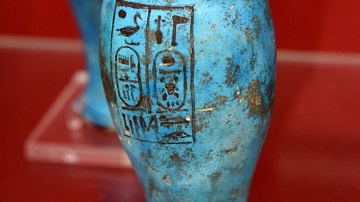
Image
Vase Inscribed with the Cartouches of Amenhotep II
This faience vase was inscribed with cartouches of the birth (nomen) and throne (prenomen) names of the Egyptian pharaoh Amenhotep II. New Kingdom, 18th Dynasty, reign of Amenhotep II, 1427-1400 BCE. Probably from the Valley of the Kings...